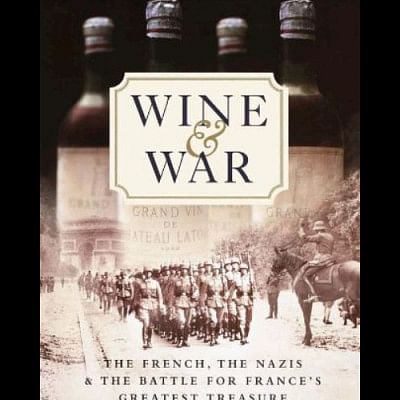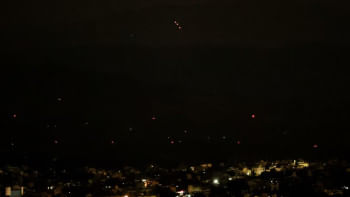The French, the Nazis, and France’s most valuable treasure: its wine

One is a much desired alcoholic consumer item the world has ever known while the other is a mode of armed conflict between countries. So you may be asking yourself 'how do wine associate with war?'
It does in a queer fashion.
If wars could be waged based on the issue of opium trading, why not wine? But the battle in this case happened in a different way.
In the book Wine and War the authors Don and Petie Kladstrup, Don - a distinguished journalist and a former TV news correspondent, and his wife, Petie, a freelance writer—have unearthed and compiled a series of true stories about the French wine and the Nazis, the wartime and other activities of the five prominent winemaking families of Burgundy, Alsace, Champagne, Bordeaux and the Loire Valley, the smuggle and struggle for wine and more...
Soon after Hitler's occupation of France the Nazis got indulged in looting gold, jewellery, paintings, luxury cars to antiques. Since the looting temptation engulfed luxury, opulence and fine taste so why should wine be spared? Thus was created the Nazi wing named: Weinführers (nicknamed by the French)
The Weinführers were the German bureaucrats who oversaw Hitler's attempts to plunder French winery to help compensate for the Nazi war effort: wine was a commodity like any other, and France had more of it than any other European nation.
The Nazis Heinz Bomer reigned in Bordeaux, Adolphe Segnitz's in Burgundy and Otto Klaebisch's ruled in Champagne. Fascinatingly the collusion between French merchants and German officials in these places was often compassionate than hostile, for there existed a much mutual respect and a genuine love for wine.
Nevertheless, there were many strategies that the French had deployed to protect their wine treasure from being smuggled. They had built hidden walls to conceal thousands of bottles, faked dusty cobwebs to make less-desirable and cheap bottles look rare and vintage; sabotaged Nazi wine-transporting trains and even fill wine bottles with water while they were being shipped to Germany. It also thrillingly narrates how some of the brave winemakers hid Jewish refugees and smuggled members of the Resistance across the Demarcation Line in wine barrels
The eleven chapters in the book, in due course, reveal some captivating off-beat tales followed by a general account of the invasion of France. Firsthand accounts are also shared by the individual wine producers who had survived the war. However, it's the compilation of factual titbits surrounding some well known personalities that have caught this reviewer's attention.
For instance- Goering's attempts to unearth the bricked-up 1867 vintage wines from La Tour d'Argent, (the famous Paris restaurant); how Louis Eschenauer, the famed Bordeaux négociant and restaurateur, was found guilty of collaborating with the German foreign minister Ribbentrop; How Napoleon, long before the Second World War, had ordered wagon loads of champagne to sustain the morale of his armies and how, during the First World War, huge quantities of wine were shipped to soldiers in the trenches of Northern France; How the French forces deliberately separated itself from the allied forces in Germany, in order to re-capture some half a million bottles of rare and vintage wine from Hitler's mountain retreat in South Germany...
While reading, a famous quote by Benjamin Franklin kept repeating in my mind - "Wine is constant proof that God loves us and loves to see us happy." Maybe true but fighting over the bottle never appeared so bitter, so controversial and also, at times, so self-contradictory. Finally, the punch in the book seems quite simple: there lie all those bottles of wine that escaped rape and pillage, shock and horror, and surely these are the ones which will always taste better from the rest.
Based on three years of research and interviews with the survivors who engaged in this classic war for wine, the authors had done a commendable job. Some more original insights could have added more value. Photographs too, are lacking.
Priced at £ 7.99 and published by coronet the book isn't an easy get in the local stores and this reviewer could only get hold of a copy from where else, but from the shacks at Nilkhet.
The writer is a journalist

 For all latest news, follow The Daily Star's Google News channel.
For all latest news, follow The Daily Star's Google News channel. 



Comments